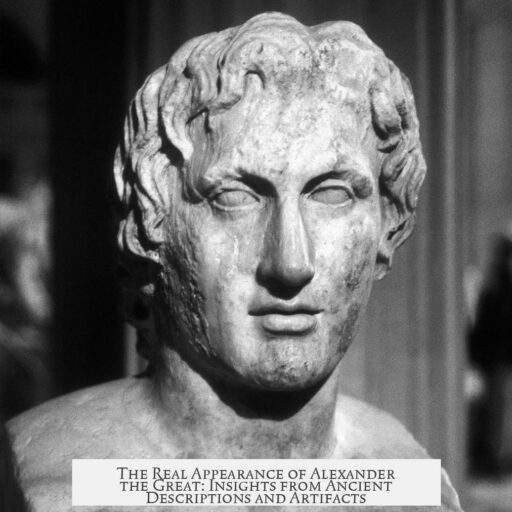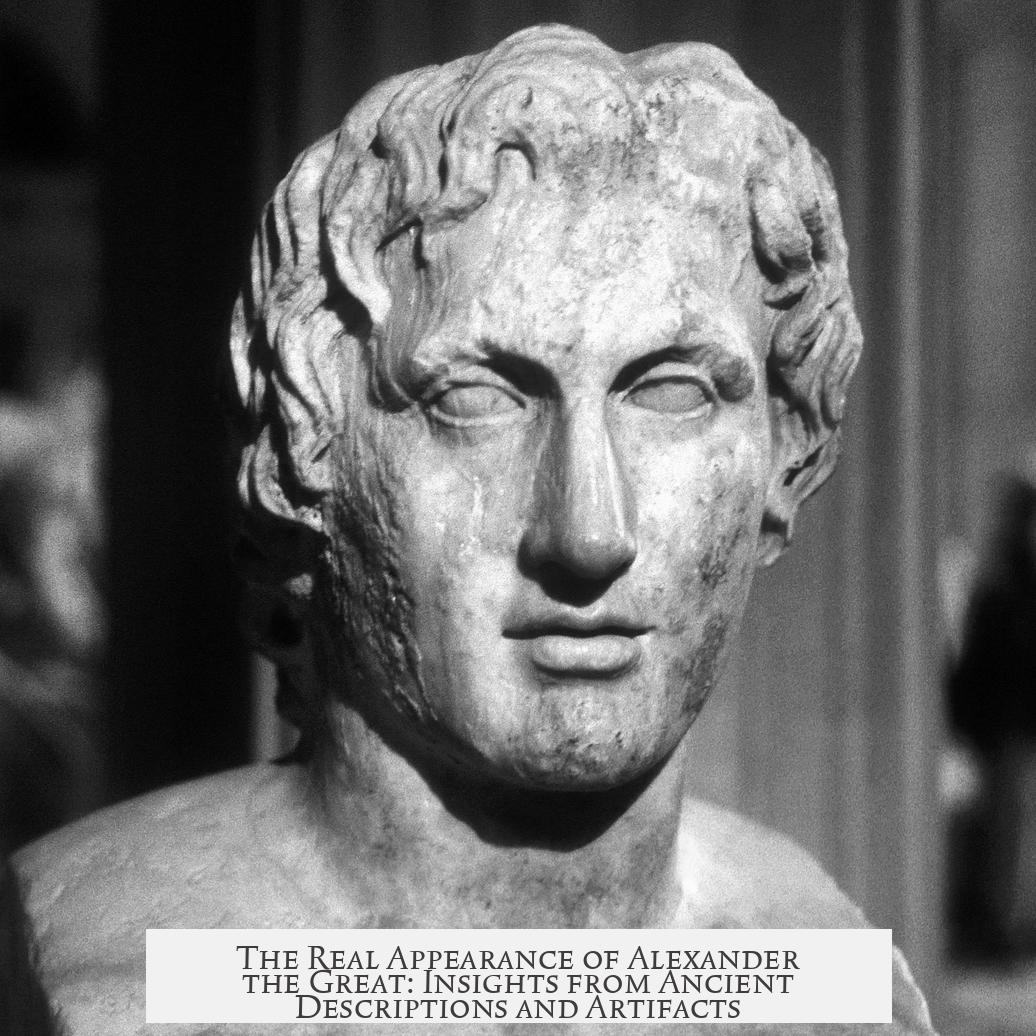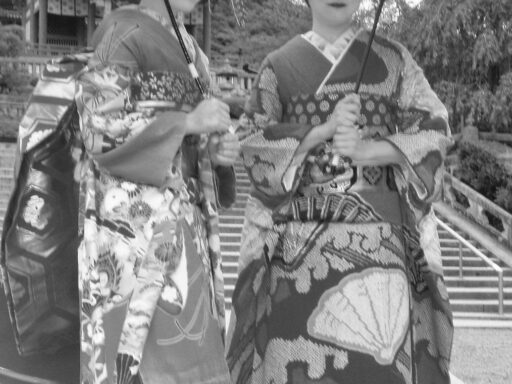Alexander the Great is most reliably described as a youthful, pale-skinned man with medium-length, slightly curly hair, typically depicted with a distinctive hairband called the diadema. These characteristics come chiefly from ancient sources such as Plutarch’s Life of Alexander and surviving sculptures attributed or inspired by Lysippus, Alexander’s favored sculptor.
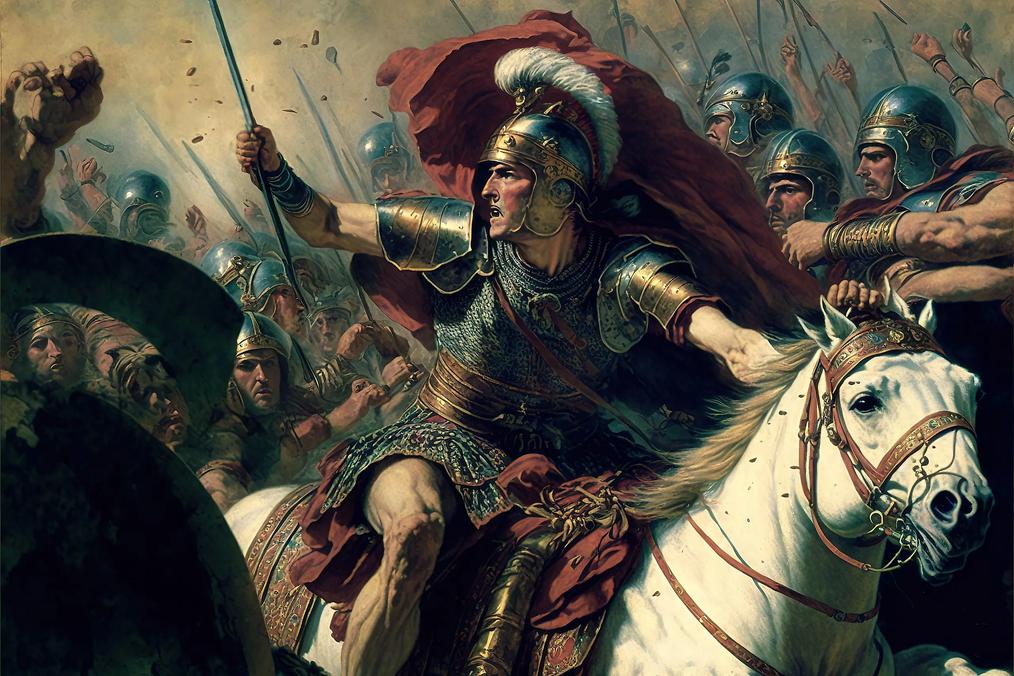
Plutarch, drawing from Aristoxenus, a contemporary and fellow student of Aristotle, notes that Alexander had pale skin with a subtle reddish tint on his chest and face. This detail may carry literary nuance more than exact realism but remains one of the few textual references to his complexion. Unusually, Aristoxenus also remarked that his body and breath carried a sweet fragrance. While this may seem anecdotal or exaggerated, it illustrates the distinctive details ancient observers preserved about his person.
Three key features mark Alexander’s visual portrayal in statues and artwork:

- Hair: His hair is medium-length, slightly curly, and loose — often shown as almost tousled and ready to fall over his face. This style contrasts with other contemporary depictions, where hair is more rigid or formally arranged. Scholars suggest his hairstyle may have held divine connotations, setting him apart visually from others of his time.
- Neck and Gaze: Lysippus’ statues present Alexander with his neck gently inclined to the left and a pliant, engaging gaze. This pose was influential and later copied by successors and artists portraying him or later kings.
- Youthfulness: Alexander never appears as a mature adult in sculptures. He is always depicted as youthful, embodying eternal vigor. This symbolic choice distinguished him from his father, Philip II, and influenced Hellenistic royal iconography for centuries.
The diadema, a thin cloth headband worn above his forehead, stands out as a major emblem of Alexander’s kingship. Unlike a formal crown, the diadema was originally a hairband frequently worn by Alexander. Over time, it became a defining symbol of Hellenistic rulership, adopted by successor kings across their realms. The origins of the diadema as a symbol remain debated; ancient Macedonian, Persian, and Egyptian traditions have been proposed without definitive evidence.
Despite these insights, reconstructing Alexander’s exact appearance poses challenges. The surviving visual material is idealized, often bearing symbolic meaning rather than naturalistic portraiture. Paint and color details have faded on sculptures, obscuring the true color of his skin and hair. Descriptions in ancient texts may carry biases or literary embellishments, skewed by cultural or political motives. Therefore, historians and archaeologists emphasize caution and avoid over-speculation.
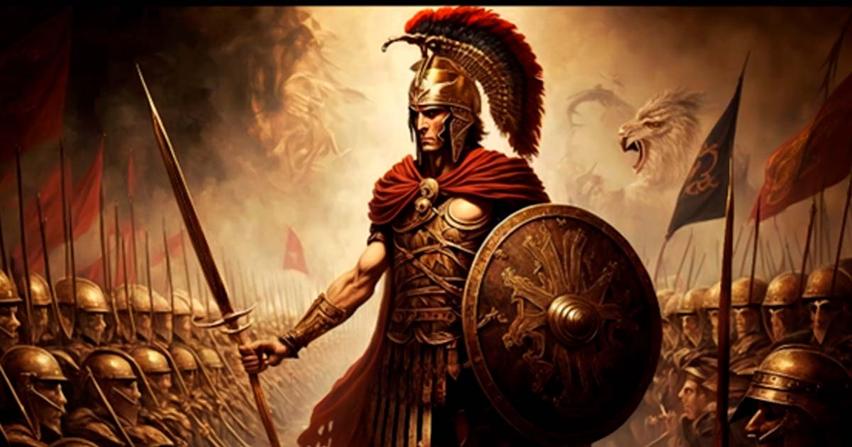
| Feature | Description | Comments |
|---|---|---|
| Skin Tone | Pale, with a reddish tint on face and chest | Possibly symbolic; reported by Plutarch quoting Aristoxenus |
| Scent | Sweet fragrance on skin and breath | Unusual detail; source: Aristoxenus (via Plutarch) |
| Hair | Medium-length, slightly curly, loosely arranged | Distinctive; probably held symbolic meaning |
| Neck & Gaze | Neck tilted left; engaging gaze | Iconic pose from Lysippus’ statues |
| Youthfulness | Always young-looking, never mature adult | Used symbolically to assert eternal vigor |
| Diadema | Thin cloth headband above hairline | Emblem of kingship; origin uncertain |
Alexander’s portrayal influenced countless successor kings and Hellenistic rulers, who replicated his youthful, vigorous iconography alongside the distinctive diadema. These visual cues became shorthand for royal authority and divine favor in post-Alexandrian culture.
While many depictions and stories about Alexander exist, the consensus is limited to a few reliable points: his pale complexion, distinctive hair, youthful appearance, and the diadema. Beyond this, much remains obscured by the passage of time and the mythologizing that surrounds his figure.
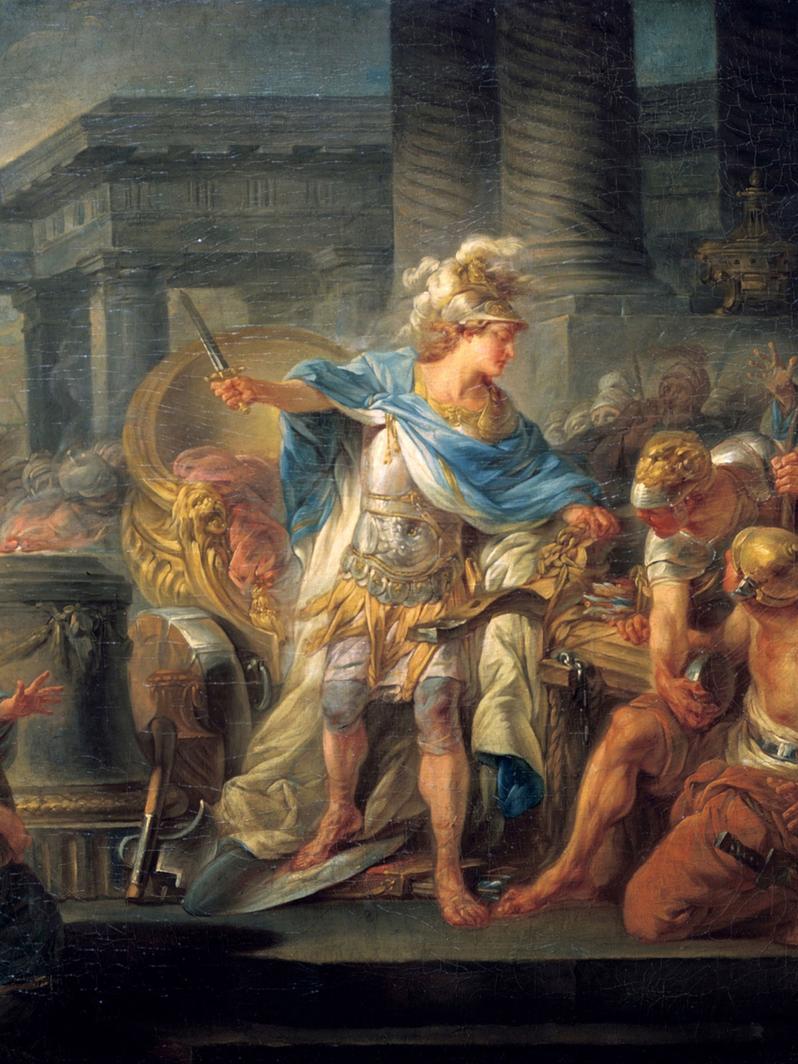
- Alexander had a pale skin tone with slight redness on face and chest as noted by ancient writers.
- His hair was medium-length, loosely curly, and styled to appear effortlessly tousled.
- He was consistently portrayed as youthful, never shown as a fully mature adult.
- The diadema, a simple cloth band, was worn by Alexander and became a symbol of kingship.
- Descriptions rely heavily on idealized statues and possibly literarily motivated ancient texts.
- Exact colors and finer details of his appearance remain uncertain due to lost pigmentation and cultural reinterpretations.
What Did Alexander the Great Actually Look Like?
Alexander the Great had medium-length, slightly curly hair that looked like it was always about to fall across his face, a gentle leftward tilt of his neck, and youthful features that made him stand out—not as a mature man, but forever young in appearance. His skin was pale with a hint of reddish tint on the chest and face, and, intriguingly, his body reportedly gave off a sweet scent. And yes, he made wearing a simple cloth hairband—the diadema—so stylish that it became a royal symbol for generations after.
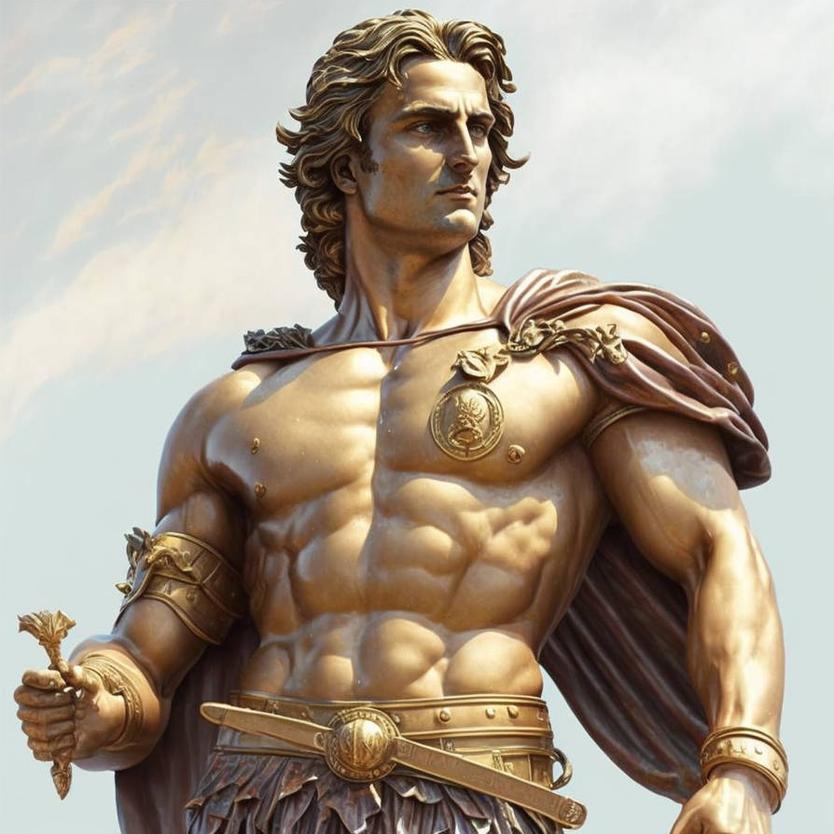
Now, let’s dig deeper into this fascinating look, because the truth about what Alexander actually looked like is a blend of art, stories, symbolism, and a pinch of mystery. Ready for a journey that blends history and legend? Let’s go.
Plutarch’s Description: Sweet-Smelling and Slightly Pale

Our best ancient source comes from Plutarch’s Life of Alexander, quoting Aristoxenus, a contemporary and Aristotle’s fellow student. He paints a curious picture: Alexander was pale, but with a faint red flush on his face and chest. Sounds like a classic “I’m regal but flushed from battle” vibe. The paleness may also hint at literary flourishes or hidden meanings, possibly even adding some subtle eroticism, but who’s to say?
The odd detail that Alexander’s skin smelled sweet is unique and memorable. According to Plutarch, the scent was so strong it even filled his clothes. Now, that’s not your typical royal fragrance! It might sound exaggerated, but Aristoxenus, a firsthand witness, lends some credibility.
Imagine meeting a conqueror who, besides being fearsome, smells like he just stepped out of a spa. Quite the charisma boost, don’t you think?
The Sculptor Lysippus: Crafting the Eternal Youth
Alexander himself commissioned Lysippus to sculpt him, and it’s this artist’s works that set the standard for how Alexander was visually remembered. The striking features? The slight twist of the neck, inclined gently to the left, and a gaze described as pliant.
This pose became iconic, copied widely by successors and later kings trying to channel Alexander’s vibe. Notably, these statues always depicted him as a young man—never as the mature adult he was in his later years. Why? Scholars have long suggested this was a deliberate decision. It differentiated him from his father, Philip II, and emphasized Alexander’s image as the eternal youthful warrior-king. Think of it as the ancient “forever 21” effect, quite clever.
The statues also highlight his musculature, but that’s a bit generic and part of royal portraiture conventions. Still, it adds to the picture we get of a vigorous, dynamic youth.
Hair: The Almost-Out-of-Control Signature
One of the most distinctive aspects of Alexander’s portraits is his hair. Unlike many formal statues showing perfectly arranged hair, Alexander’s locks were medium-length, slightly curly, and appeared almost to be on the verge of falling over his forehead.
This loose, tousled hairstyle was unusual, setting him apart from other rulers like the Motya Charioteer or Harmodius. Some historians speculate that this look might have conveyed a subtle divine quality.
Imagine a king whose hair forever flirts with disorder—talk about a signature style that rebels against stiff formality!
The Diadema: A Hairband That Ruled an Empire
Nothing quite shouts “royalty” like a crown, right? Well, Alexander’s royal “crown” was actually a simple thin cloth band—the diadema—worn above his forehead, just over his fringe. This modest hairband became a definitive symbol of his kingship.
Later Hellenistic kings adopted it, turning it into a trademark of monarchic power, although its origins remain murky. Was it Macedonian? Persian? Egyptian? Or just a practical hairband turned political symbol? Historians remain divided.
One thing’s certain though: Alexander’s hairband changed royal fashion forever. If it had a slogan, it might be “keep it simple, but make it legendary.”
Challenges in Pinning Down His True Appearance
Despite these details, many aspects of Alexander’s actual appearance remain unclear. Historians caution strongly against jumping to conclusions because much of what we know relies on copies of statues, idealized images, or writings that carry political motives.
Moreover, discussions about his skin and hair color have often been tangled with nationalist or racial debates through history, making scholars wary of speculating without solid evidence.
Still, some elements seem reliable, like his characteristic hairstyle and the enduring symbol of the diadema. These features help us separate fact from fiction.
A Summary Table of Alexander’s Known Traits
| Feature | Description / Source | Comments |
|---|---|---|
| Skin Tone | Pale with reddish tint on chest and face (Plutarch) | Possibly literary motif; uncertain |
| Scent | Sweet-smelling skin and body (Aristoxenus via Plutarch) | Unique detail; possibly credible |
| Hair | Medium-length, slightly curly, loosely arranged | Distinctive, repeated in statues |
| Neck Position & Gaze | Neck gently inclined left with pliant gaze (Lysippus statues) | Signature pose copied widely |
| Youthfulness | Depicted as eternally young, never mature adult | Deliberate contrast with father Philip II |
| Diadema (Hairband) | Simple cloth band worn above forehead | Symbol of kingship, origin debated |
What Can We Learn and Apply Today?
Alexander’s image teaches a few timeless lessons. One, how visual branding can endure for centuries—even a simple cloth hairband becomes a symbol of power and legacy.
Two, the power of youthful energy in leadership imagery. Alexander’s statues project eternal vitality, a marketing strategy to inspire awe and loyalty. Modern leaders might take note—sometimes perception truly shapes influence.
Finally, it reminds us to be cautious about historical appearances. So much depends on context, culture, and motive. Even history’s greatest conqueror’s face is partly a mystery, blending reality with myth.
So, What Did Alexander Really Look Like?
The truth? We can confidently picture a young, fit man with curly, medium-length hair, striking yet approachable features, and an unmistakable cloth hairband crowning his forehead. His skin leaned pale with a hint of warmth, and legend adds the uniquely sweet aroma he brought wherever he went. That’s enough to imagine him stepping off a statue and into your history books, looking every bit the charismatic and timeless ruler history remembers.
Care to know more about how history molds appearances? Or curious if the sweet-smelling royal secret worked on his enemies? Keep exploring—Alexander’s story never gets old.
What were the distinctive features of Alexander the Great’s hair?
Alexander’s hair was medium-length and slightly curly. It was loose and seemed like it might fall over his face. This style was unusual compared to other sculptures of the time and may have symbolized divinity.
How did ancient statues depict Alexander’s pose and expression?
Statues by Lysippus show Alexander with his neck gently inclined to the left and a pliant gaze. This posture was iconic and copied by many later artists. It highlighted his youthful and vigorous image.
Did Alexander’s skin color have any particular description in ancient sources?
Plutarch described Alexander as pale, with a reddish tint on his chest and face. However, this may be a literary motif rather than a precise physical detail. The color of his skin in statues cannot be confirmed.
What is the significance of the diadema in images of Alexander?
The diadema is a thin cloth band worn above Alexander’s forehead. It became a symbol of his kingship and was adopted by later Hellenistic rulers. Its exact origin and meaning remain uncertain but it was emblematic.
Can we fully trust the accuracy of Alexander’s portraits and descriptions?
No, many depictions are idealized, showing eternal youth and divine features. Political and cultural biases influenced his image. Only a few details, like his hair and iconic pose, are considered relatively reliable.
